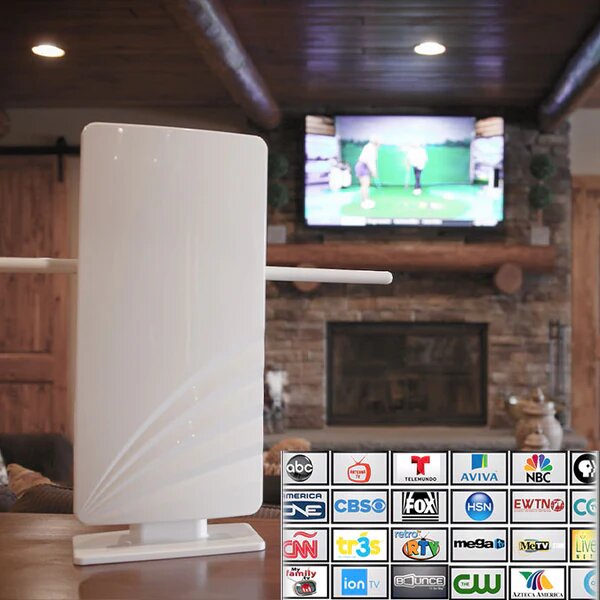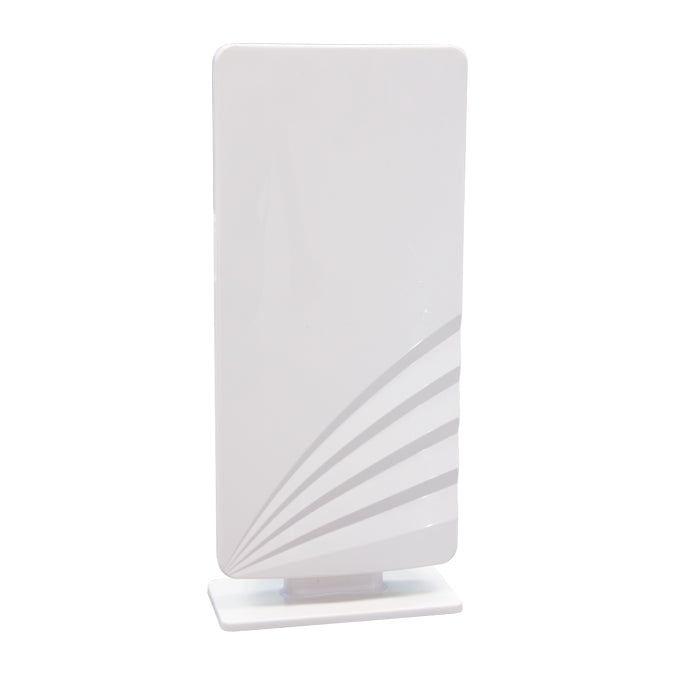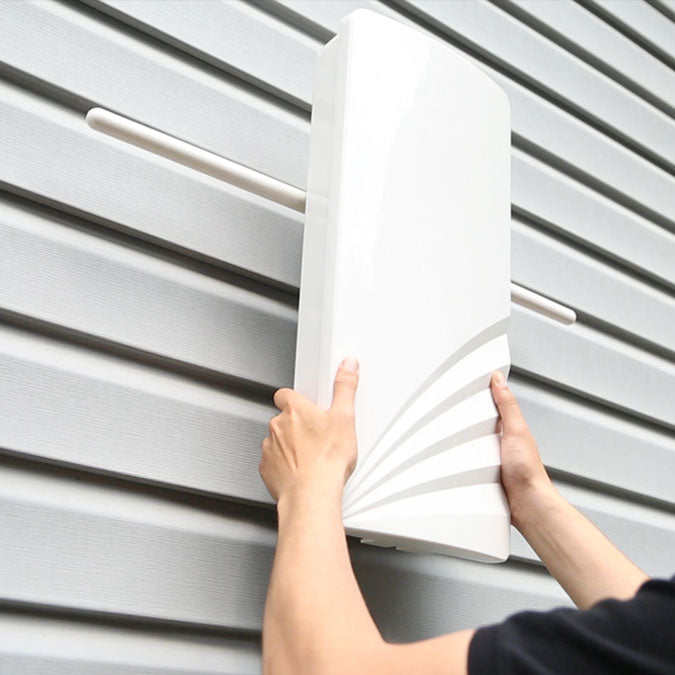An HD TV antenna allows users to capture over-the-air (OTA) television broadcasts, providing access to local channels without the need for cable or satellite services. These antennas are designed to pick up high-definition signals, delivering crisp picture quality. With the transition to digital TV, the role of antennas has evolved, offering superior clarity. Choosing the right HD TV antenna involves understanding factors such as location, distance from broadcast towers, and signal type. By carefully selecting an antenna, users can enjoy a cost-effective solution for watching TV.
Benefits of Using an HD TV Antenna
An HD TV antenna offers numerous advantages. First and foremost, it eliminates the need for expensive cable packages, reducing monthly bills. Another key benefit is access to local channels, which are often unavailable through streaming services. HD antennas also provide excellent picture quality, as OTA broadcasts aren’t compressed like cable or satellite feeds. Furthermore, many antennas are compact and easy to install, making them a convenient option for most homes. Finally, with an antenna, viewers can watch live TV without any delays or internet connection interruptions.
How HD TV Antennas Work
HD TV antennas operate by capturing broadcast signals sent from local television stations. These signals are transmitted over the airwaves in the UHF (Ultra High Frequency) or VHF (Very High Frequency) ranges. Once the antenna receives the signal, it is transmitted to the television, where it is converted into a picture. Digital antennas are designed to filter out noise, ensuring that the signal received is as clear as possible. The performance of the antenna depends largely on its type, the strength of the signal, and any obstacles between the antenna and the broadcast tower.
Choosing the Right Type of HD TV Antenna
There are several types of HD TV antennas available, each suited for different needs. Indoor antennas are ideal for users located near broadcast towers, as they are compact and easy to install. Outdoor antennas, on the other hand, provide greater range and are better suited for rural areas or homes far from broadcasting stations. Directional antennas focus on picking up signals from one direction, which can improve reception quality in certain areas. In contrast, multi-directional antennas capture signals from all directions, making them suitable for urban environments with multiple towers.
Installation Tips for HD TV Antennas
Installing an HD TV antenna is a simple process, but there are a few tips to ensure optimal performance. First, place the antenna as high as possible and near a window to reduce signal interference from walls and other obstacles. Second, aim the antenna in the direction of the nearest broadcast tower. This can be done using online tools or apps that show the locations of towers relative to your home. Additionally, ensure that the antenna is securely mounted to avoid any movement, which can affect signal quality. After installation, scan for channels using your TV’s settings.
Indoor vs. Outdoor HD TV Antennas
When selecting an HD TV antenna, one of the key decisions is choosing between an indoor or outdoor model. Indoor antennas are compact and easy to install but may struggle with weaker signals if the user is located far from broadcast towers. Outdoor antennas offer superior signal strength and range, making them ideal for rural areas. However, outdoor models require more effort to install, as they must be mounted on a roof or an exterior wall. Despite this, outdoor antennas are generally more durable and can withstand adverse weather conditions, providing more consistent performance.
Common Issues with HD TV Antennas and How to Fix Them
Although HD TV antennas are designed to provide clear reception, users may occasionally encounter issues. One common problem is signal interference, which can be caused by obstacles like trees, buildings, or even weather conditions. To address this, try repositioning the antenna or moving it to a higher location. Another issue is weak signal strength, which can be improved by using an amplifier or upgrading to a more powerful antenna. Sometimes, users may experience pixelation or signal dropouts, which can be resolved by re-scanning for channels or adjusting the antenna’s placement.
The Future of HD TV Antennas
As technology continues to evolve, the future of HD TV antennas looks promising. With the introduction of 4K and 8K broadcasts on the horizon, antennas are expected to play an even larger role in providing high-quality television content. Additionally, advancements in signal compression and broadcasting technology will further enhance the performance of HD antennas, allowing for more efficient signal transmission and reception. As more viewers move away from traditional cable and satellite services, the demand for reliable and high-quality antennas will continue to grow.
How HD TV Antennas Compare to Cable and Streaming
While cable and streaming services offer convenience, HD TV antennas provide a more cost-effective solution for accessing local channels. One of the main advantages of an antenna is the ability to watch live TV without monthly fees. Unlike streaming, which can experience buffering and delays, OTA broadcasts are delivered in real-time with minimal interference. HD antennas also offer superior picture quality, as the signals are uncompressed. However, cable and streaming services offer a wider variety of channels, so users may choose to complement their antenna with a streaming device for more options.
Do HD TV Antennas Work in All Locations?
The effectiveness of an HD TV antenna depends on the user’s location. In urban areas with strong signals and close proximity to broadcast towers, an indoor antenna will likely suffice. However, in rural or remote locations, users may need an outdoor antenna to capture weaker signals. The terrain, such as mountains or tall buildings, can also impact signal reception. In areas with significant signal interference, users may need to invest in a more powerful antenna or use an amplifier to boost the signal. Always check the distance to your nearest broadcast tower before purchasing an antenna.
The Importance of Antenna Placement
Antenna placement plays a critical role in the performance of an HD TV antenna. Placing the antenna near a window or on a higher surface helps reduce interference from walls and other obstacles. Additionally, facing the antenna toward the nearest broadcast tower can improve signal strength and picture quality. Users can experiment with different placements to find the best location for their antenna. In some cases, simply moving the antenna a few inches can significantly improve reception. For outdoor antennas, mounting on a roof or an exterior wall ensures optimal signal capture.
Amplifiers: Do You Need One for Your HD TV Antenna?
An amplifier can be a useful addition to an HD TV antenna setup, especially in areas with weak signals. Amplifiers boost the signal strength, improving picture quality and reducing interference. However, not all users will need an amplifier. In urban areas with strong signals, an amplifier may cause more harm than good by overloading the signal, leading to pixelation. If you’re unsure whether you need an amplifier, try using the antenna without one first. If the reception is poor or if you’re missing channels, adding an amplifier might help improve the performance.
How far can an HD TV antenna reach?
HD TV antennas have different ranges depending on their type and quality. Indoor antennas typically have a range of 20 to 50 miles, while outdoor antennas can reach up to 150 miles.
Can I use multiple HD TV antennas in my home?
Yes, using multiple HD TV antennas in your home is possible, but it requires a signal splitter and may result in signal degradation. Consider using one powerful antenna for the entire house instead.
Are HD TV antennas compatible with all televisions?
Most modern HD TV antennas are compatible with any television that has a digital tuner. If your TV is older, you may need a digital converter box for the antenna to work.













